In the event of a Mercedes-Maybach S-Class crash, advanced safety systems are designed to minimize impact forces and protect occupants. This analysis breaks down how these features work to ensure passenger safety in critical situations.
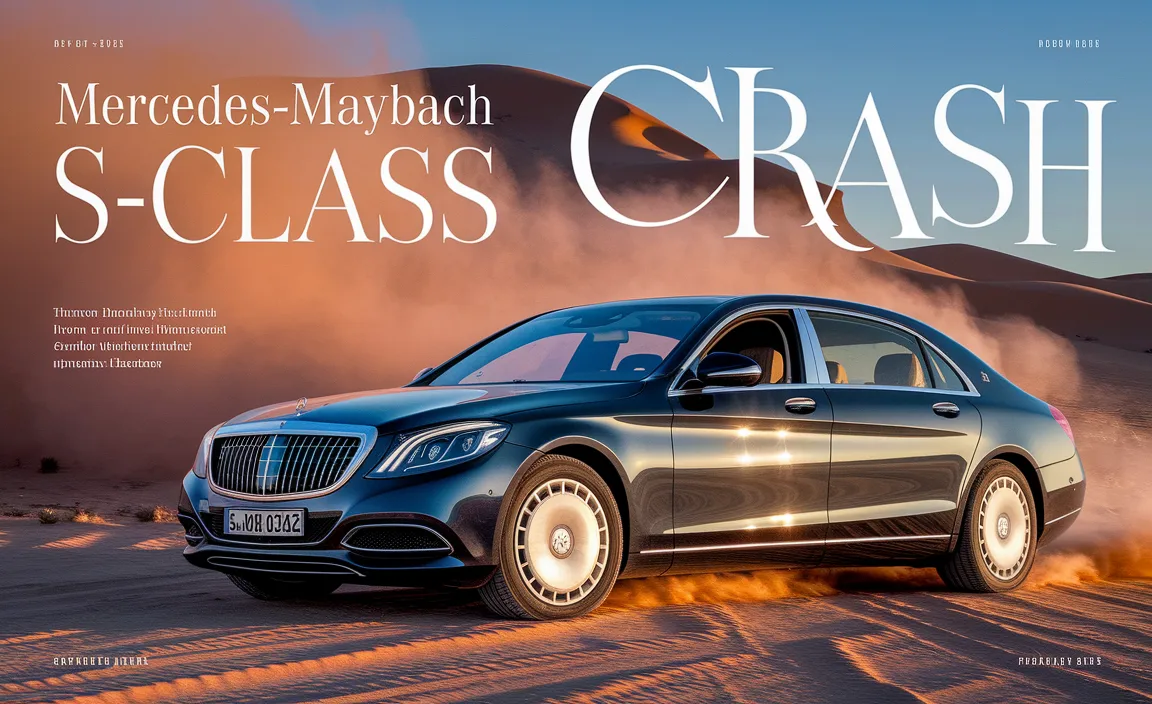
Owning a Mercedes-Maybach S-Class is a statement of luxury and advanced engineering. But when the unthinkable happens – a crash – what happens inside this opulent sanctuary? Many owners might wonder just how the sophisticated technology within this car protects them. It’s not just about plush seating and premium sound systems; at its core, the S-Class is built with your well-being as the top priority. We’re going to take a closer look at the safety innovations that come into play during a collision, making complex systems easy to understand.
Understanding the safety measures in your Mercedes-Maybach S-Class doesn’t require a degree in engineering. Think of it like learning how to use the advanced features of your smartphone – a little guidance makes all the difference. We’ll explore the technologies that work diligently in milliseconds to keep you and your passengers safe. Let’s dive into how this incredible vehicle handles a crash, from impacts to evasive maneuvers.
Unpacking the Halo of Safety: The Mercedes-Maybach S-Class’s Core Safety Philosophy
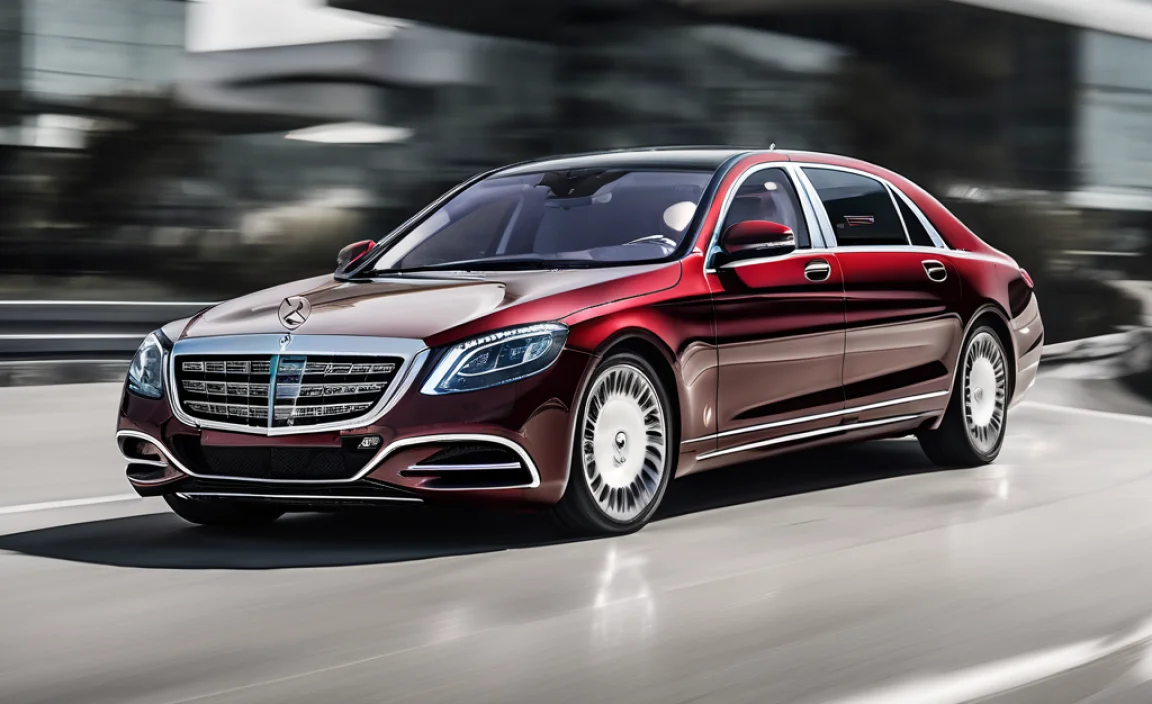
Mercedes-Benz has long championed a philosophy of “real driving safety,” meaning they design systems not just for ideal conditions, but for the unpredictable realities of the road. The S-Class, and by extension the Mercedes-Maybach S-Class, represents the pinnacle of this commitment. It’s not just about passing crash tests; it’s about proactively preventing accidents where possible and providing an unparalleled level of occupant protection when an accident is unavoidable.
This philosophy is built on three pillars: safety before, during, and after an accident. Technologies like PRE-SAFE® sense potential collisions and prepare the car and its occupants. During an impact, a robust structure and advanced airbags work in concert. After a crash, systems like the emergency call function ensure help is on the way quickly. It’s a holistic approach designed to create a comprehensive safety net.
The Anatomy of Protection: How the S-Class Body Withstands Impact
The very structure of the Mercedes-Maybach S-Class is engineered to absorb and dissipate crash energy. This is achieved through a meticulously designed body-in-white that utilizes a combination of high-strength steel alloys, aluminum, and even magnesium in certain components. These materials are strategically placed to reinforce critical areas while keeping weight down.
Think of the car’s body as a carefully crafted exoskeleton. In a crash, this structure is designed to deform in a controlled manner. The goal is to create crumple zones – areas at the front and rear of the vehicle that are engineered to collapse and absorb the impact energy, like a sponge. This prevents the severe forces from reaching the passenger cell, which is reinforced to remain as rigid as possible.
High-Strength Steel and Intelligent Design
The passenger cell, often referred to as the “safety cage,” is constructed from ultra-high-strength steels. These incredibly strong materials provide a rigid structure that helps maintain the integrity of the cabin space, protecting occupants from intrusion during a significant impact. The placement and design of the A, B, and C pillars, along with the roof structure, are crucial in maintaining this structural integrity.
Mercedes-Benz utilizes advanced computer simulations and extensive physical testing to refine these structural elements. They analyze thousands of potential crash scenarios to ensure that the materials and design work together effectively. You can learn more about vehicle safety standards and testing on the National Highway Traffic Safety Administration’s (NHTSA) website, a great resource for understanding global safety benchmarks.
The Symphony of Airbags: Advanced Restraint Systems
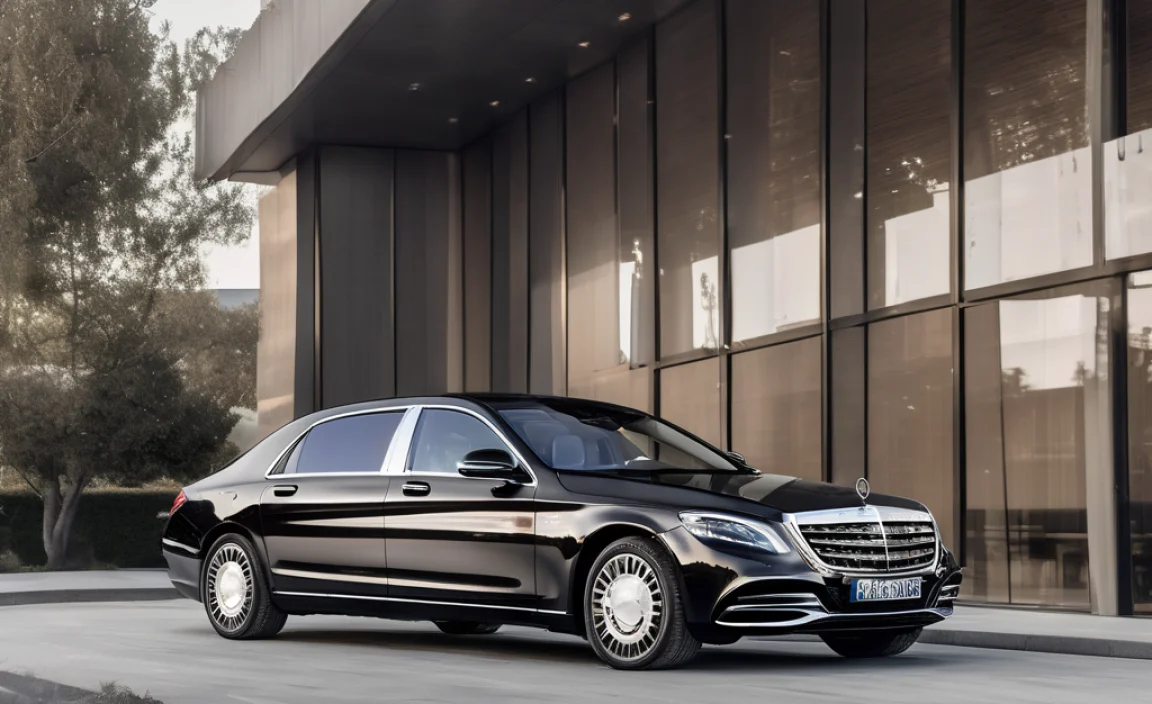
While the car’s structure works to absorb energy, the restraint systems, particularly the airbags, are designed to cushion occupants during the dynamic forces of a crash. The Mercedes-Maybach S-Class is equipped with an extensive network of airbags, going far beyond the basic driver and passenger airbags found in older vehicles.
These advanced systems inflate in milliseconds to fill the space between the occupant and the car’s interior, significantly reducing the risk of head and chest injuries. The system is intelligent, often adjusting inflation force based on the severity of the crash and the occupant’s position.
A Multi-Stage Airbag Deployment
Modern S-Class models often feature multi-stage driver and front passenger airbags. This means the airbag can inflate in two stages, with varying degrees of force. If the crash is minor, it might deploy with less force. For a more severe impact, it deploys with maximum force. This adaptive approach enhances safety and comfort.
Beyond the front, side, and curtain airbags, you’ll find innovations like:
- Knee Airbags: These protect the driver’s and front passenger’s legs and knees from impacting the dashboard.
- Beltbag: Often found in the rear seats, this airbag inflates within the seatbelt itself, broadening the restraint area and reducing belt pressure on the chest.
- Front Seatbelt Pretensioners: In a crash, these quickly tighten the seatbelts to remove any slack, holding occupants firmly in their seats and improving the effectiveness of the airbags.
- Adaptive Force Limiters: These work with the seatbelts to control the force exerted on the occupant’s chest, further reducing the risk of injury.
PRE-SAFE®: Anticipating the Accident Before It Happens
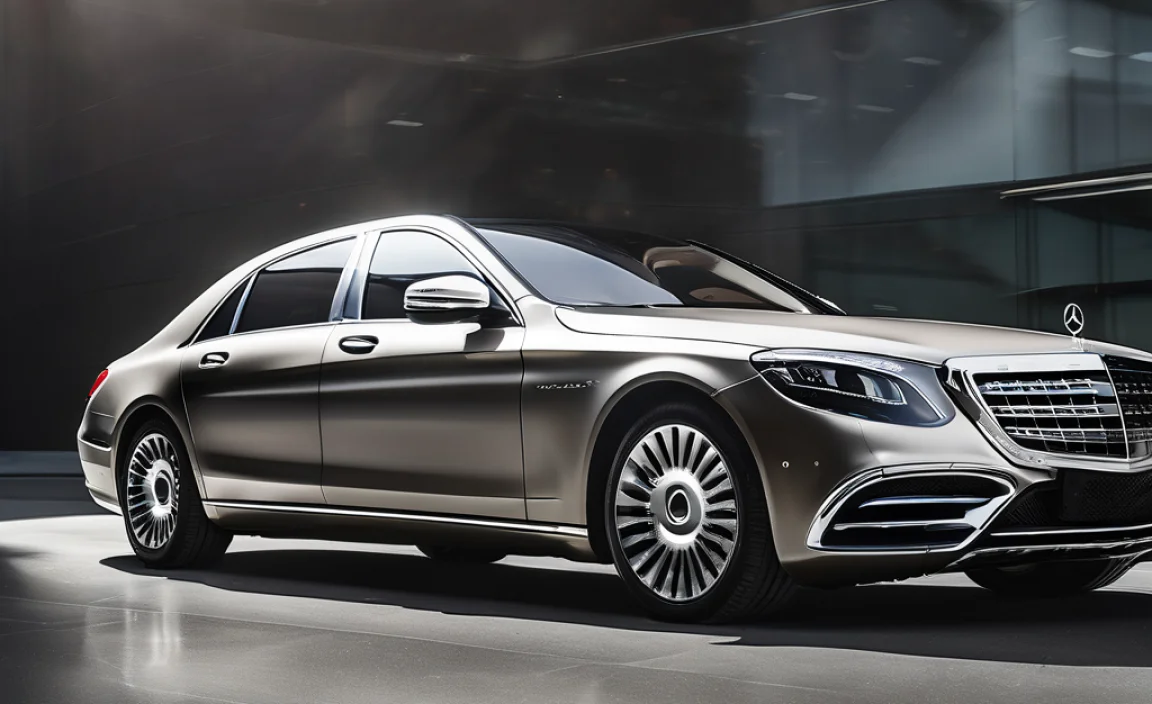
One of the most groundbreaking safety innovations is the PRE-SAFE® system. This isn’t about reacting to a crash; it’s about anticipating one and preparing the vehicle and its occupants in the crucial seconds leading up to an impact. It’s like having a guardian angel keeping a watchful eye on the road ahead.
PRE-SAFE® systems can detect a potential collision or a loss of control. When it senses such a risk based on various sensor inputs (like sudden braking or steering), it triggers a series of protective measures almost instantaneously.
How PRE-SAFE® Works in Detail
When PRE-SAFE® is activated, it initiates several actions:
- Seatbelt Pretensioning: The seatbelts are tightened to pull the occupants back into their seats, minimizing forward movement.
- Seat Adjustment: In some models, the front passenger seat can automatically move forward and adjust its angle to provide a better seating position and more space for airbag deployment. The headrests might also move forward.
- Closing Windows and Sunroof: If the windows and sunroof are open, they are automatically closed to help keep occupants inside the vehicle and improve the performance of the side airbags and curtain airbags.
PRE-SAFE® is a testament to Mercedes-Benz’s commitment to a proactive approach to safety. It’s a complex system of sensors and actuators working in harmony to mitigate potential harm before the main impact occurs.
Advanced Driver-Assistance Systems (ADAS) as a First Line of Defense
Before we even get to the car’s passive safety features (those that protect you during a crash), it’s essential to understand the active safety systems, also known as Advanced Driver-Assistance Systems (ADAS). The Mercedes-Maybach S-Class is equipped with a suite of these technologies designed to help prevent accidents from happening in the first place.
These systems use cameras, radar, and ultrasonic sensors to monitor the vehicle’s surroundings and can actively intervene to prevent collisions or reduce their severity.
Key ADAS Features on the S-Class
While specific features can vary by model year and optional packages, here are some common ADAS found in the S-Class that contribute significantly to safety:
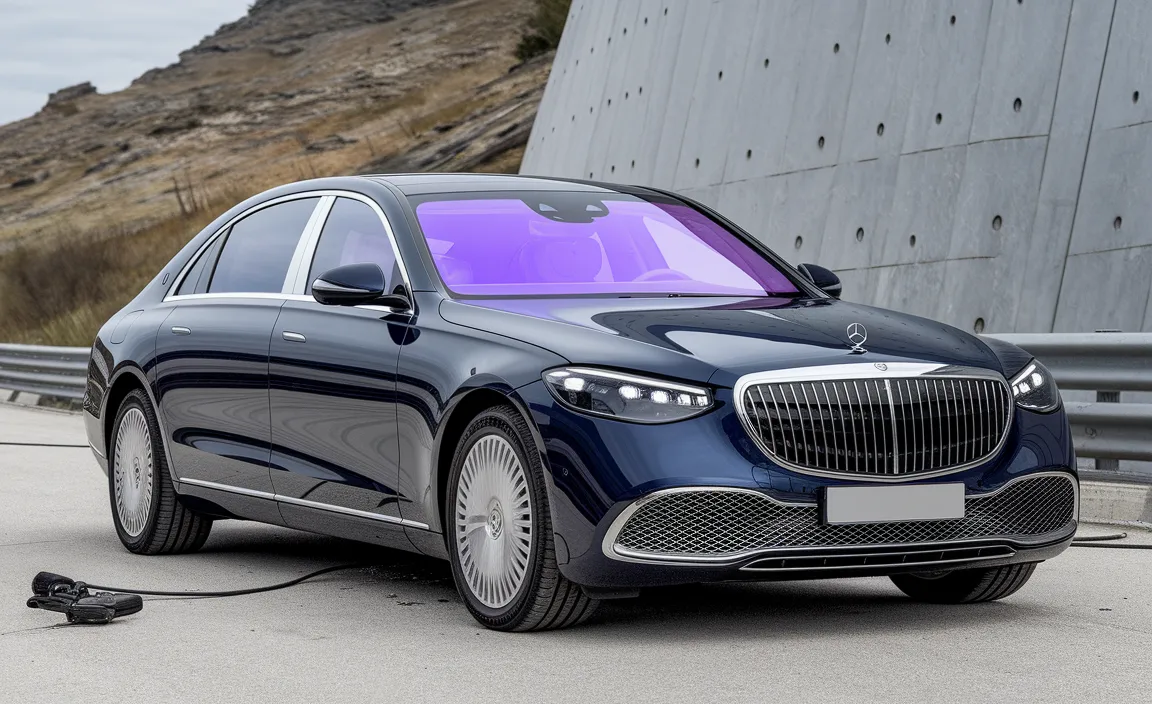
| System | Function | Benefit |
|---|---|---|
| Active Brake Assist (ABA) | Warns the driver of an impending collision and automatically applies the brakes if the driver doesn’t react. Can detect vehicles, pedestrians, and cyclists. | Helps prevent or mitigate frontal collisions. |
| Active Lane Keeping Assist (ALKA) | Monitors lane markings and can detect unintentional lane departures, nudging the steering wheel to keep the vehicle in its lane. | Prevents drifting out of the lane on highways. |
| Active Blind Spot Assist (ABSA) | Monitors blind spots and can warn the driver or even intervene with braking to prevent a collision when changing lanes. | Reduces the risk of side-swipe collisions. |
| PRE-SAFE® PLUS (for rear-end collisions) | Can detect an impending rear-end collision and initiate preventive measures, including applying the brakes to reduce the impact’s severity. | Mitigates the force of rear-end impacts. |
| Evasive Steering Assist | Assists the driver in performing an evasive maneuver by supporting steering adjustments. | Helps avoid obstacles when a collision is imminent. |
These systems act as an extra set of “eyes” and can react faster than a human driver in many situations. They are invaluable tools for enhancing road safety for all.
In The Event of a Crash: Post-Collision Safety Measures
Even with all the preventative measures and passive safety structures, a collision can still happen. In such scenarios, the Mercedes-Maybach S-Class has systems in place to ensure occupants are cared for and that emergency services can respond efficiently.
This post-crash phase is critical for ensuring the safety and well-being of everyone involved. It’s about immediate aid and rapid rescue, and the S-Class is equipped to deliver on both fronts.
Automatic Emergency Call (eCall)
A cornerstone of post-crash safety is the Mercedes-Benz Emergency Call system, often referred to as eCall. If a severe accident occurs, triggering airbags or seatbelt pretensioners, the vehicle can automatically initiate an emergency call to a designated emergency response center. This call transmits crucial data, including vehicle location, direction of travel, and even the severity of the crash.
This immediate communication significantly reduces the time it takes for emergency services to reach the scene. In many regions, this eCall functionality is mandated by law for new vehicles due to its life-saving potential. You can find more information on eCall systems and their importance on regulatory bodies like the European Commission’s mobility and transport portal.
Post-Collision Automatic Actions
Beyond the emergency call, the vehicle may perform other actions to enhance safety after a crash:
- Hazard Lights: The hazard lights will often activate automatically to warn other traffic.
- Engine Shut-off: In many cases, the engine will shut down to prevent potential post-crash fires.
- Door Unlock: Some systems may automatically unlock the doors to facilitate easier exit or rescue.
What Does a “Mercedes-Maybach S-Class Crash” Analysis Actually Mean for You?
When we talk about a “Mercedes-Maybach S-Class crash,” it’s not about dwelling on the negative. It’s about understanding the incredible engineering and foresight that goes into creating a vehicle designed to protect you under the most extreme circumstances. For owners and enthusiasts, this detailed analysis offers peace of mind.
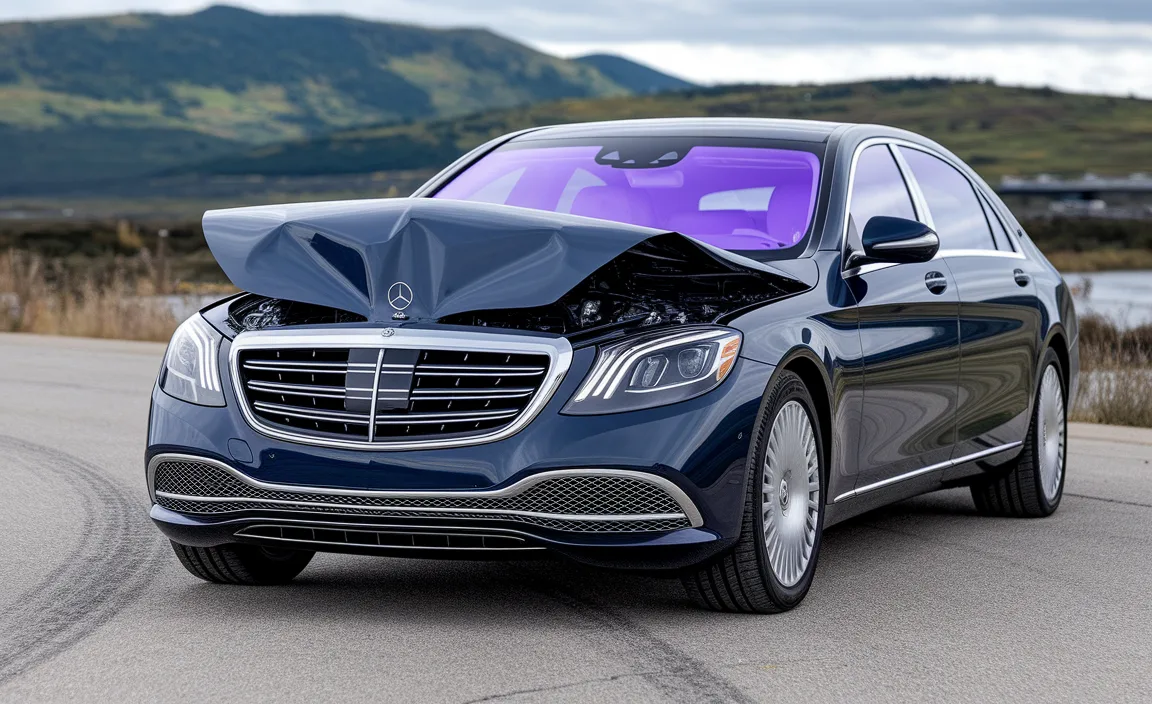
It highlights that your investment in a Mercedes-Maybach S-Class is also an investment in one of the safest vehicles on the planet. The combination of active safety features that help avoid accidents, passive safety structures that absorb impact, and intelligent restraint systems that cushion occupants is truly remarkable. It’s a complex interplay of technology working constantly to ensure safety.
Key Takeaways for Owners
- Trust the Systems: The advanced safety features are not just marketing; they are rigorously tested and designed to work in concert.
- Regular Maintenance: Ensuring your vehicle is properly maintained is crucial for all safety systems to function correctly. Adhere to your Mercedes-Benz service schedule.
- Understand Your ADAS: Familiarize yourself with the various driver-assistance systems in your car. Knowing how they work will help you use them effectively and build confidence. Refer to your owner’s manual for detailed explanations.
- Stay Informed: Vehicle safety technology is constantly evolving. Researching and understanding these advancements can help you appreciate the engineering behind your car.
Conclusion: Engineering for Peace of Mind
The Mercedes-Maybach S-Class is more than just a symbol of luxury; it’s a testament to decades of dedicated research and development in automotive safety. From the ultra-high-strength steel that forms its unyielding core to the sophisticated network of airbags and the intelligent PRE-SAFE® system, every element is designed with one paramount purpose: to protect its occupants.
Understanding how these systems function in the critical moments of a Mercedes-Maybach S-Class crash provides invaluable peace of mind. It allows owners to appreciate the depth of engineering involved and reinforce the importance of maintaining these advanced features through regular servicing. The commitment to safety is woven into the very fabric of the S-Class, ensuring that when you travel, you do so in the embrace of pioneering automotive protection.
Frequently Asked Questions (FAQ)
Q1: What is the primary safety goal of the Mercedes-Maybach S-Class in a crash?
The primary goal is to protect occupants by minimizing impact forces through a strong structure, advanced airbags, and intelligent restraint systems, while also aiming to prevent accidents with driver-assistance technologies.
Q2: How do “crumple zones” in the S-Class work?
Crumple zones are designed areas at the front and rear of the car’s body that are engineered to deform and collapse in a controlled manner during an impact. This process absorbs and dissipates the energy of the collision, preventing it from reaching the passenger compartment and the occupants.
Q3: Can the S-Class airbags deploy differently depending on the crash?
Yes, many S-Class models feature multi-stage airbags that can deploy with varying levels of force. The system can adapt the inflation power based on the severity of the impact, providing a more tailored and effective protection.
Q4: What is the role of PRE-SAFE® in crash safety?
PRE-SAFE® is an anticipatory system. It senses the potential for a crash before it happens and pre-emptively takes steps like tightening seatbelts and adjusting seats to prepare occupants for impact, thereby enhancing the effectiveness of other safety features.
Q5: Are the driver-assistance systems (ADAS) a replacement for careful driving?
No, ADAS are aids designed to assist the driver and enhance safety, but they are not a replacement for attentive driving and responsible decision-making. Drivers should always remain focused and in control of the vehicle.
Q6: What happens immediately after an S-Class is in a severe crash?
In a severe crash, the vehicle can automatically contact emergency services via the eCall system, deploy hazard lights, and potentially unlock doors or shut off the engine to ensure occupant safety and facilitate rescue.